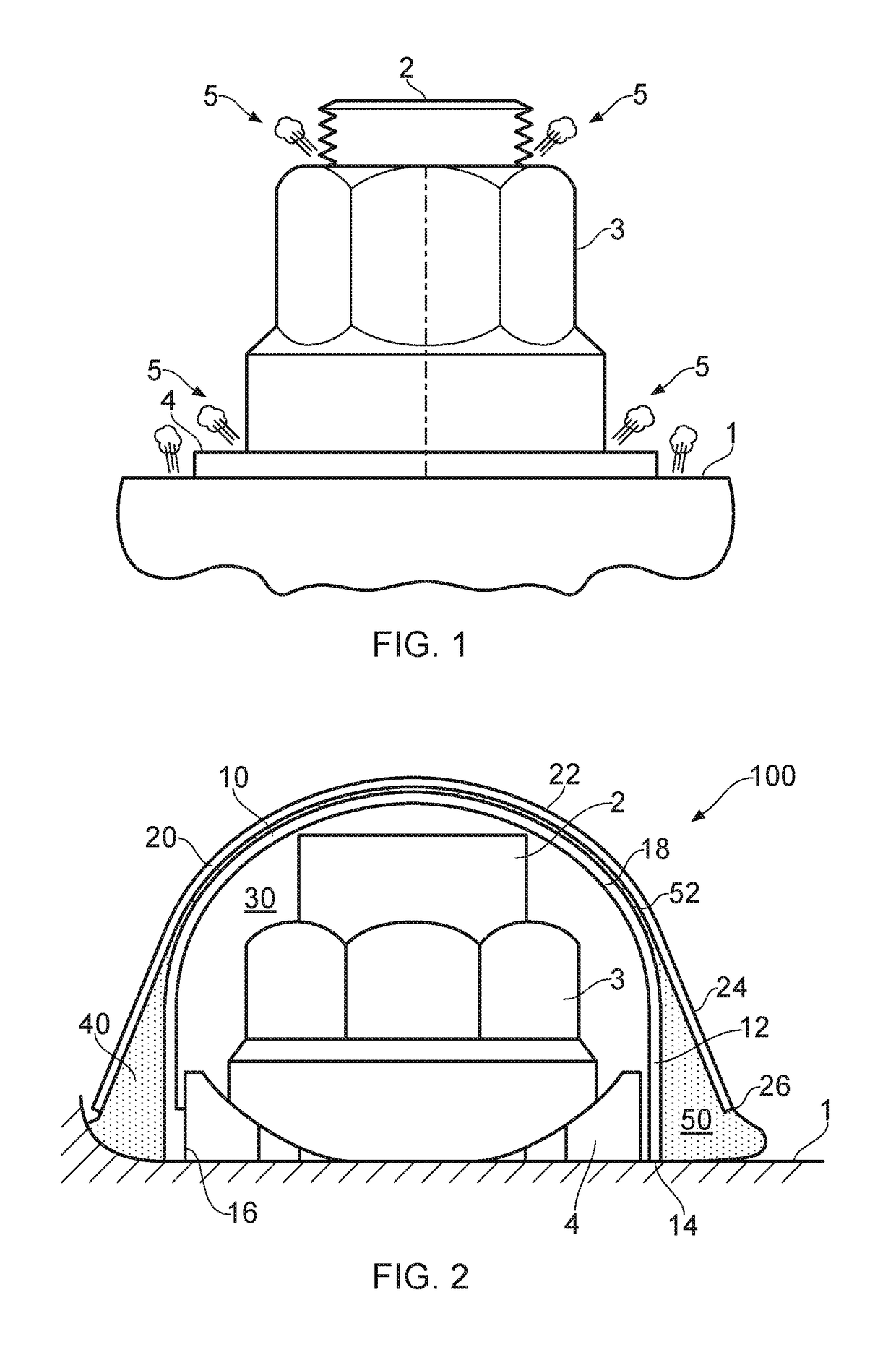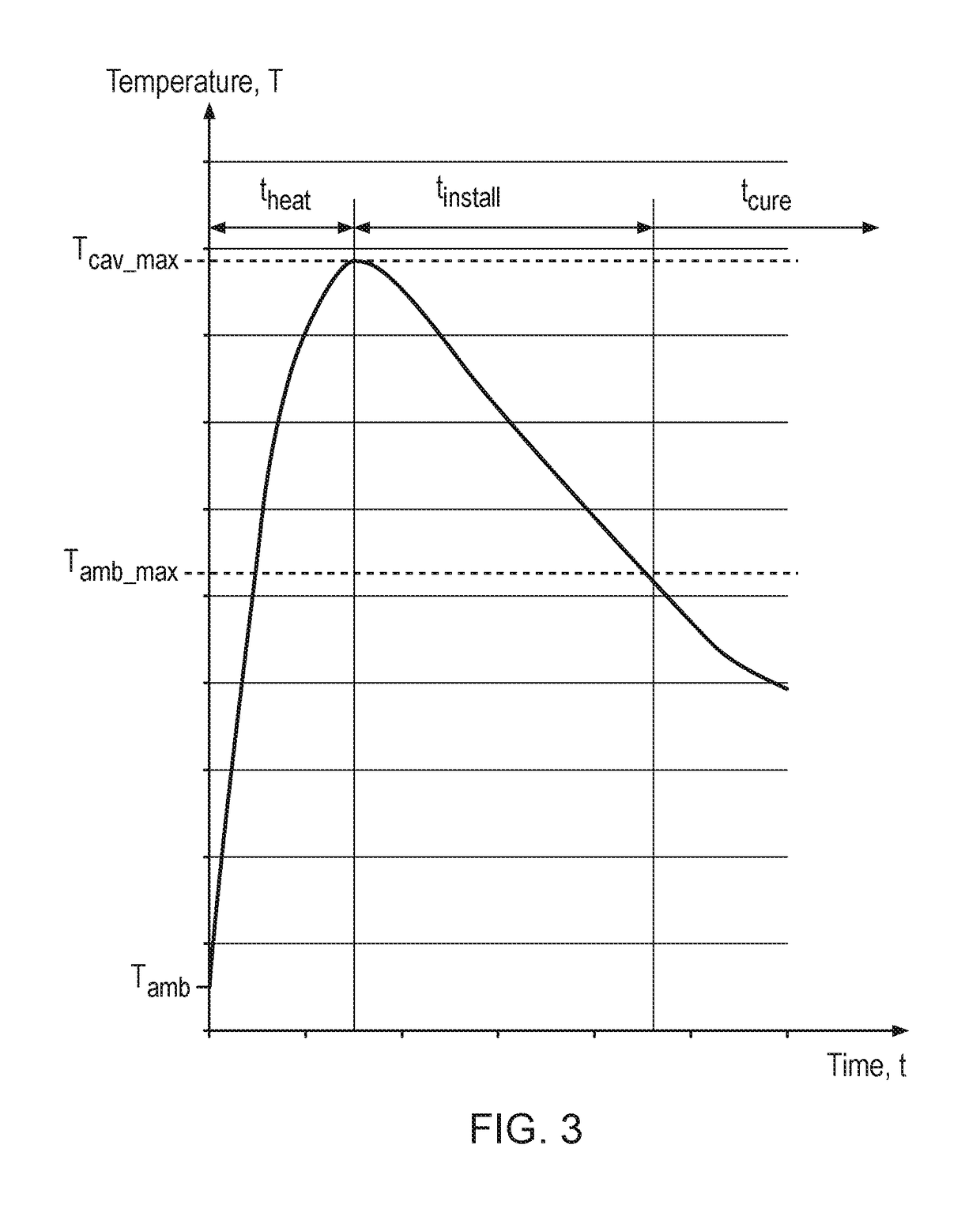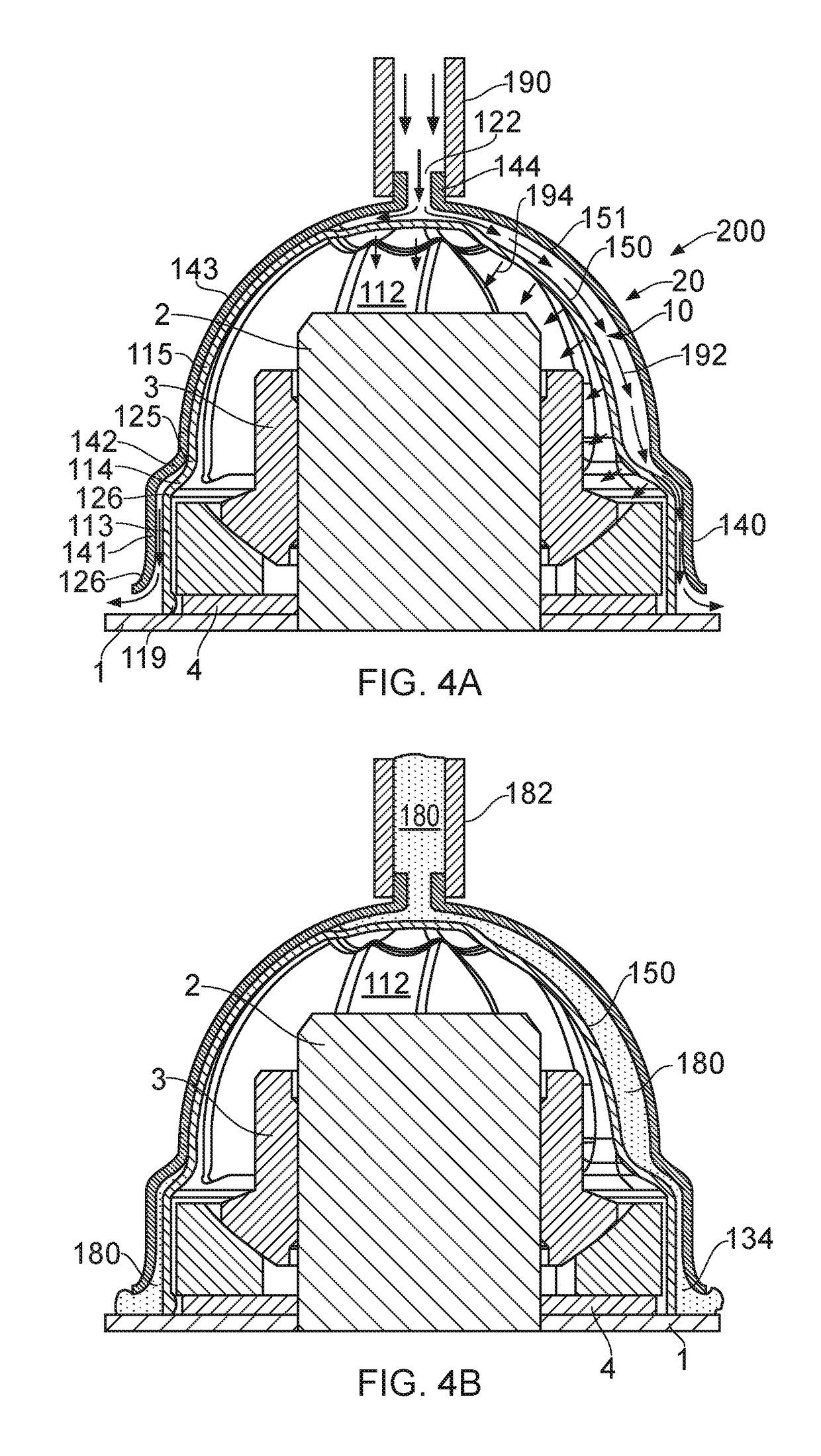Method of installing a spark containment cap
a technology of containment cap and installation method, which is applied in the direction of threaded fasteners, aircraft lighting protectors, fastening means, etc., can solve the problems of fuel leakage, negative pressure difference, and pressure drop within the cavity, so as to avoid sealing defects
- Summary
- Abstract
- Description
- Claims
- Application Information
AI Technical Summary
Benefits of technology
Problems solved by technology
Method used
Image
Examples
Embodiment Construction
)
[0023]FIG. 2 illustrates a prior art spark containment cap 100 which can be used in a method according to an embodiment of the invention to form a sealed cavity 30 around the end of a fastener protruding from a structural member 1. In this embodiment the fastener end comprises the tail end of a bolt 2 in threaded engagement with a nut 2 seated on a spherical washer 4. In other embodiments the fastener end may comprise the head end of the bolt 2, or the fastener may comprise any other known fastener type, such as a rivet or swage fastener.
[0024]The cap 100 comprises an inner cap member 10 and an outer cap member 20 which is fitted snugly over the inner cap member 10. The inner and outer cap members 10, 20 are injection moulded from a thermoplastic material such as glass-filled polyetherimide (PEI). A suitable glass-filled PEI is Ultem™ 2400, which includes 40% glass fibres by volume. The inner and outer cap members may alternatively be made by moulding, by an additive manufacturing ...
PUM
| Property | Measurement | Unit |
|---|---|---|
| radius | aaaaa | aaaaa |
| radius | aaaaa | aaaaa |
| temperature | aaaaa | aaaaa |
Abstract
Description
Claims
Application Information
 Login to View More
Login to View More - R&D
- Intellectual Property
- Life Sciences
- Materials
- Tech Scout
- Unparalleled Data Quality
- Higher Quality Content
- 60% Fewer Hallucinations
Browse by: Latest US Patents, China's latest patents, Technical Efficacy Thesaurus, Application Domain, Technology Topic, Popular Technical Reports.
© 2025 PatSnap. All rights reserved.Legal|Privacy policy|Modern Slavery Act Transparency Statement|Sitemap|About US| Contact US: help@patsnap.com



